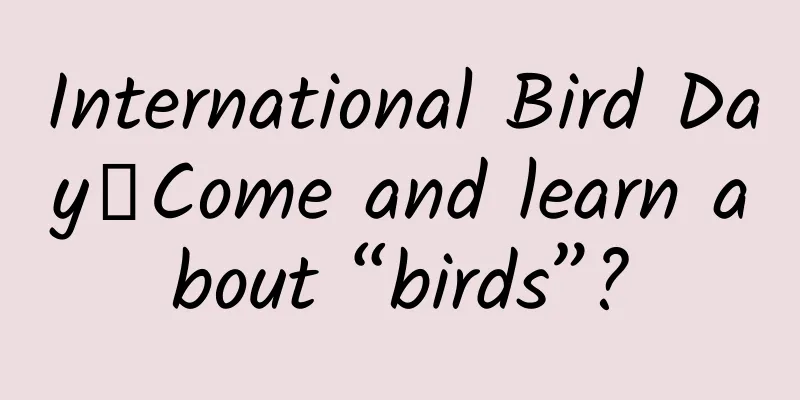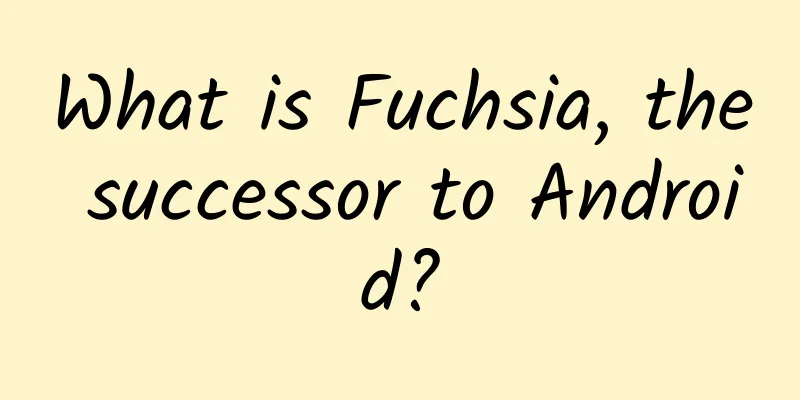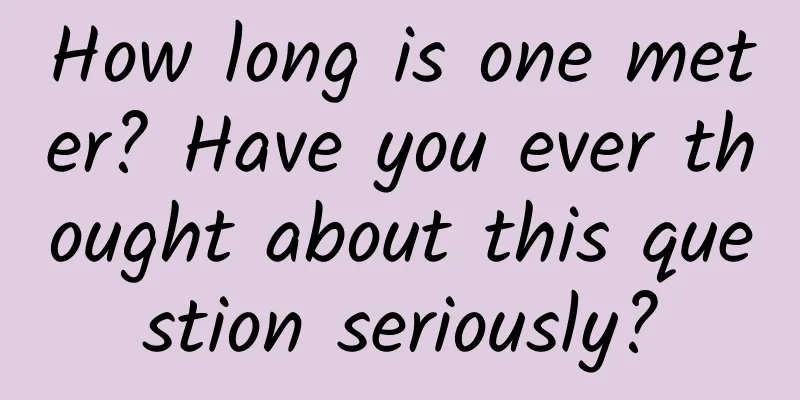Yes! Animals also dream and have consciousness

|
We usually think that humans are the only creatures on earth that dream. However, David M. Peña-Guzmán, an American animal behaviorist who specializes in critical animal studies, has searched scientific literature and, based on detailed data from a large number of animals such as domestic cats, rats, zebra finches, zebrafish and chimpanzees, has proved that animals do dream, and many animals perform "reality simulation" when they sleep. In his new book, Do Animals Dream, he also combines animal dreaming behavior with neuroscience research and philosophical theories of dreaming, and puts forward the view that animals are conscious creatures, and delves into the thorny scientific ethical issues raised by this. This book is not only a vivid interpretation of animal dreams, but also a fascinating interpretation of their philosophical and moral meanings. The following is a book review written by the translator of this book, Mr. Gu Fanji, a professor at the School of Life Sciences of Fudan University. It not only briefly summarizes the scientific evidence and methods presented by the author of this book, but also comments on the philosophical and moral implications of the author's proposal that animals dream. Written by Gu Fanji Do animals dream? What kind of animals dream? Chimpanzees? Monkeys? Elephants? Dogs? Birds? Octopuses? Earthworms? As humans, we know that we are conscious when we dream. If animals also dream, does that mean they are conscious? If animals are conscious, how should we treat them? This is the topic discussed in the new book "Do Animals Dream?" Although people have been curious about their own and animals' inner world since ancient times until the 19th century, they have always been introspective and speculative. After the rise of behaviorism in the first half of the last century, the academic community generally believed that science could only observe and study behavior, and that inner activities could not be studied, and even denied the existence of inner activities, thus excluding the study of inner activities from the scope of scientific research. It was not until the second half of the 20th century that the study of cognition was put back on the scientific research agenda due to the progress of neuroscience and technology. Scientists began to talk about consciousness again in the late 1980s, but the study of animal dreams and consciousness lagged behind. This is because animals cannot speak, and how to know whether animals can dream seems to have become an unanswerable problem. It was not until 2020 that the first scientific paper on animal dreams was published. Of course, there is no need to mention a book specifically discussing this issue. Animal behaviorist David Peña-Guzman's new book, Do Animals Dream? - The Secret World of Animal Consciousness[1], takes this as its theme. At the beginning, he collected a large amount of experimental data from three aspects: behavior, electrophysiology, and functional anatomy, which unanimously supported the view that animals can also dream. Then the author raised the issue to a philosophical level to provide a reasonable explanation. He used the fact that animals can dream to show that these animals also have consciousness. Then, since animals are not stimulated by the outside world when dreaming, the source of this consciousness must be endogenous, and what is seen in dreams is not a replay of real experiences, but a kind of construction, indicating that these animals can also imagine and have their own inner world, which is different from our human experience. Therefore, the author believes that we must change the original contemptuous attitude of most people towards animals and need to reconsider our attitude towards them. Such an empirical and relatively comprehensive discussion of various issues related to animal dreams can naturally be regarded as a pioneering work on this issue. The reason why this book is attractive is not only because of its theme, but also because it collects a lot of interesting experimental materials, and the author tells the story in his vivid and brilliant writing, making people unable to stop reading. Do animals dream? The most interesting part of the book is that the author uses many facts to powerfully prove that animals also dream: Behavioral evidence American biologist David Schell kept an octopus named Heidi and observed her strange behavior: Heidi was resting peacefully at first, but suddenly her skin changed from snow-white to a shimmering yellow with orange spots - which is usually what she does when she sees a crab when she is awake - and then she turned dark purple. Schell explained, "Octopuses usually do this when they leave the seabed after a successful kill." Then, Heidi's skin turned into a series of light grays and yellows, but this time the colors were crisscrossed and randomly distributed on many stripes and sharp corners. "It's a camouflage, like she just caught a crab and was about to sit down and eat it, and she didn't want anyone to notice it." What's striking is that the pattern and order of Heidi's color changes are always exactly the same as when she was awake to catch crabs, which can't be explained by coincidence. A reasonable explanation is that Heidi is dreaming about predation. Heidi presented 3 different colored patterns continuously while sleeping, probably because she was hunting and eating prey in her dreams | Source: Do Animals Dream? Electrophysiological evidence In 2000, biologists Amish Dave and Daniel Margoliash recorded patterns of neural activation in the brain's "birdsong system" as a group of young zebra finches slept. They found that the zebra finch brains switched back and forth between two states during sleep: one with sustained but low levels of neural activity and another with spontaneous bursts of high levels of firing at regular intervals. They then recorded neural patterns in the same brain regions as the birds practiced singing while awake. They found that the patterns triggered by the act of singing while awake were structurally identical to the patterns characterized by sudden bursts of high levels of neural activity during sleep. The match was so perfect that they could match the two note for note. They concluded that the zebra finches not only practiced their songs out loud while awake, but also mentally replayed them in sleep without chirping. Moreover, the finches spent roughly the same amount of time singing while awake as they did singing silently while asleep. At the same time, the auditory areas of their brains were activated. This means that in the extreme silence of sleep, the sleeping bird seems to "hear" its own "silent song". All this evidence suggests that zebra finches can sing in their dreams. The patterns of brain activity in zebra finches when they sing awake match the patterns they show when they sing silently in sleep. The match is so perfect that scientists can match the two patterns note by note | Image source: Do animals dream? Functional neuroanatomical evidence Why don't people act out the actions in their dreams when they are dreaming? This is because sleep produces biochemical changes that cause the sleeper to be in a state of muscle weakness, so they cannot move at will. These changes "lock" the behavioral program deep inside the sleeper. In most cases, rapid eye movement is the only motor component of the program that can escape this inhibition process and be expressed externally. French neuroscientist Michel Jouvet conducted an experiment to remove the dorsolateral part of the pontine reticular formation in a group of cats. The study showed that damage to this brain structure inhibits muscle weakness but not rapid eye movement sleep. The results were shocking. When cats with pontine damage entered REM sleep, they actually "acted out" their dreams. They stood up, meowed, walked around, combed their hair, and explored their surroundings. They showed happiness, anger, fear, exploration, etc. Some cats stared into empty space as if they were about to stalk their prey and prepare to pounce, while others ran around their enclosures, fighting imaginary enemies with all their might, but they were asleep all the time while doing this! Jouve said he could easily infer what each cat was dreaming about by comparing its behavior to its typical behavior when awake. A cat in Michel Jouvet's laboratory fights an imaginary enemy after surgery to remove the neurons responsible for myasthenia in the pons | Source: Do Animals Dream? Due to space limitations, each piece of evidence is only cited as one of the many examples in the book. Indeed, if you take any of these pieces of evidence alone, they may not be convincing, but when these findings are put together, they form a strong network of evidence that supports the hypothesis that animals also dream. American physicist and Nobel Prize winner Richard Feynman once said: "Thus, what we now call scientific knowledge is a collection of statements with varying degrees of certainty. Some of them are most uncertain; some of them are nearly certain; but none are absolutely certain."[2] Given all the evidence above, the probability that it is still pure coincidence is very small, so I think the assumption that animals also dream is "close to certainty." Animals dream, which means they are conscious Consciousness researchers generally agree that we are conscious during dreams, and a corollary to this is that animals that dream are also conscious. There is no consensus on what consciousness is. The author believes that consciousness includes three important aspects: subjective consciousness, emotional consciousness, and metacognitive consciousness. In order to show that dreaming indicates consciousness, the author first emphasizes that dreaming also has these three aspects, thus generally proving that dreaming is a sufficient condition for consciousness, but not necessary. Since animals cannot speak, the author uses the study of human dreams to illustrate the problem in terms of subjective consciousness and metacognitive consciousness, and infers that since animals can dream, they should have these aspects of consciousness like humans. Of course, this is indirect reasoning after all, and there is a lot of speculation, so it needs to be noted. It’s just that in terms of emotional consciousness, the author used more animal research results and has direct evidence. Subjective consciousness This has two aspects: 1. Subjective sense of existence, that is, the feeling that one exists at the center of one's own world and has been in that position for a long time; 2. Embodied self-awareness, that is, the sense that you have a body as a matter of course. On the relationship between dreams and subjective consciousness, the author emphasizes that as long as there is a dream, there must be a self that realizes, maintains and experiences it. When we dream, this subjective center makes us feel that we are "there" and that what happens in the dream is happening to us. No matter how unstable, illogical or absurd, each dream is organized around a dream self that is "in" the dream, and the dreamer ultimately identifies that dream self as himself. We never just watch our dreams from the sidelines, but are in them. Emotional awareness We can be happy or sad in our dreams, which means we have emotional awareness when we dream. Drastic emotional changes are also often the driving force behind animals' dreams. British neuroscientist Olafs Doughty and her team proposed a clever two-stage experiment to study this question. They asked a group of rats to perform a spatial task. Nobel Prize winner O'Keefe discovered that the activation of different place cells in the hippocampus corresponds to the different locations of the animal in a familiar environment. Therefore, by recording the activation sequence pattern of place cells in the animal's hippocampus, it is possible to know the animal's inner understanding of the changes in its position in the surrounding space. They compared the resulting hippocampal activation patterns during wakefulness and sleep. In the first phase, they acclimated rats to a T-shaped maze in which access to two smaller arms of the maze was blocked by transparent barriers. The rats could run back and forth on the main path of the maze and see the two branching arms, but could not actually explore them. Then, the experimenters introduced motivation into the scenario by marking one of the arms with a reward (a few grains of rice) and leaving the other arm empty. This caught the rats' attention, and they ran to the junction of the maze's branches and stared eagerly at the delicious pile of rice just in front of them. Once familiar with the setup, the rats were removed from the maze and allowed to take a nap. While they slept, the researchers recorded the order in which individual hippocampal cells fired, which formed a "neural map" of the rats' experiences, reflecting the rats' "journey" in their dreams. Olafsdottir and her colleagues hypothesized that the rats mentally "pre-explored" the marked arm of the maze and placed their little paws on the object they wanted to obtain. To test their hypothesis, they put the rats back into the maze in the second phase of the experiment, but this time the transparent barrier blocking the entrance to the arm with the rice was removed, as well as the rice itself. After reinserting the rats, as predicted, the rats ran to the junction of the T-maze and immediately turned in the direction of the arm that had been baited, suggesting that they remembered which arm contained the tasty reward and expected to find it there. Even after realizing that the rice was no longer there, the animals spent longer exploring that arm than the control rats. As the rats bustled back and forth between the arms that had previously held the reward, the researchers recorded firing events in the hippocampus and found that the patterns associated with the rats’ physical exploration of this particular section of the maze were identical to those they had recorded while the rats were napping. The same hippocampal cells fired in the same order when the rats fell asleep after seeing but not actually exploring the rewarded arm and when they explored that arm after a nap. This confirmed beyond a doubt that the hippocampus was doing the same thing at both moments: one when the rats slept after seeing the reward and the other when they were disappointed to discover that the area they had explored no longer contained a reward. In other words, the rats remembered many aspects of the real environment that had emotionally aroused their interest and actively imagined a “future experience” that would make their desires come true. This imagination occurred while they were asleep. Furthermore, there is considerable evidence that animals that have been severely traumatized as infants often display signs of fear and anxiety in their sleep, even as adults, and some primates even use sign language to indicate that they are having nightmares, which is strong evidence for emotional awareness in dreams. Captive chimpanzee Wasiu "talks" in his sleep using ASL signs. Here, he makes the ASL sign for the word "coffee," including picking up something with his right hand and making a "C" shape with his left hand, with the former circling the latter as both hands move from his chest to the ceiling | Image source: "Do Animals Dream?" Metacognitive Awareness Occasionally, we recover our metacognitive abilities during dreaming and realize that we are dreaming in a moment of lucidity. The dreamer experiences a "lucid dream," in which the dreamer shifts their focus from the content of their inner state to their inner state as a whole. In other words, the dreamer no longer focuses on the things that appear in the dream, but on the dream itself. Animal dreams show that animals also have imagination In the spatial dreaming experiment on rats by Olafsdottir and his team described above, while the rats were napping, they had to imagine what it would be like to travel through a place they had never been before. To do this, they could not just search from past memories and replay them; they had to use many fragments of old experiences to create a new subjective experience. The rats needed to imagine a possible scenario that they had never encountered in the real world. The rats were not remembering; they were extrapolating, an ability to "mentally project oneself ahead (…) to deal with possible future events that had not been encountered before." Animal dreams are clear evidence of the creation of inner images without external stimulation, indicating that animals have imagination. Do animals have moral status? The author discusses the fact that animals can dream, and that they have consciousness and imagination, thus negating the popular idea that animals are just beasts without an inner world. The fact that animals can dream itself shows that there are endless other worlds beside our world - completely "other" and non-human worlds. This also raises ethical issues about the status of animals as moral subjects and how we should treat them. It is generally believed that consciousness is the basis for having moral status, but there are many aspects of consciousness. Which aspects of consciousness are the basis for having moral status? Philosopher Block divides consciousness into two types: "access consciousness" and "phenomenal consciousness". Access consciousness refers to representational inner states whose content can be used by a wider cognitive system to perform functions such as reasoning, decision-making, and language reporting; phenomenal consciousness states are non-functional. They have no substantial connection with the performance of any specific cognitive operation. They do not lead to inferences, voluntary actions, or communicative behavior. In addition, their content is perceptual rather than representational, which means that they have a definite feeling associated with them, but they do not represent anything in the external world. I can only describe it to you in a metaphorical way or let you try it yourself. But even if my metaphors are eloquent, they will still fall short in the end. Because there is always a gap between, for example, my first-person experience of red wine and my description of it. This gap is its taste, which can only be truly experienced by experiencing it in person. Thus, two major camps are formed. Access-first theorists argue that access-first consciousness is fundamental to moral worth, while sensory-first theorists argue that moral standing is generated by sensory consciousness. The divide between these two camps can be summed up in two different views of moral life: one that centers on cognition, rationality, and language, and another that places less emphasis on intellectual approaches and prioritizes our subjective, emotional, and embodied roots in the world. I believe that sentience is the key to moral status. In my view, it is sentience that makes value-giving possible. It enables biological organisms to introduce values into an otherwise valueless universe. A creature without sentience would have no vivid experience of the world, no sense of the here and now, no sense of what is positive or negative (or, good or bad). Even if such a creature could perform a host of cognitive functions, it would never have values. Without sentience, there would be no basis for assigning values, no preferences, interests, or desires. Such a creature would have no motivation to prefer one thing over another. A universe populated only by such creatures would be a universe without agents capable of assigning values, and therefore, a universe without values at all. In my opinion, the author believes that whether animals have a sense of perception rather than a sense of entry is the basis for whether they have moral status. Although he has his reasons, I think that having sense of perception is only a necessary condition for having moral status, but not necessarily a sufficient condition. Although the author imagines creatures that have only a sense of entry but not a sense of perception in the book, in some cases he simply uses autonomous robots that only have a sense of entry as an example to illustrate that sense of entry has nothing to do with moral status. However, I doubt that there are such creatures in the world, and it is even more doubtful to say that robots have consciousness just because they can perform logical reasoning, move, and speak. For creatures with sense of entry, I think such creatures first have sense of perception. The author's statement that autonomous robots that only have "sense of entry" but not "sense of perception" should not have moral status is a straw man he set up, because such robots have no consciousness at all, so naturally there is no moral status. The real question that should be considered is whether animals with only sense of perception should have moral status, or whether animals with both should have moral status. The author did not answer this question in the book. In the end, the author believes that animals that can dream should be recognized as members of the moral community. As creatures of the same kind, they should be cared for, respected and have dignity. If a subject has moral status, then we cannot treat it as we please. In this regard, although the author agrees with the author's opinion that conscious animals should not be abused, and that humans are not the only creatures that dream, have consciousness and have moral status; however, given that this issue has gone beyond the scope of natural science and is a matter of opinion, I have doubts about the author's views that we should not industrially farm animals, nor should we conduct traumatic experiments on animals for scientific research, and even treat animals like humans. It is true that some scientists have become vegetarians after studying the issue of consciousness, but the author himself does not want to do so. This may be an issue that will always be controversial! In short, this is the first masterpiece that systematically introduces animal dreams and their meanings. Although readers (including the author) may not agree with every one of his arguments, the author's views have their basis anyway. Even if you disagree, you should seriously think about his arguments and evidence. In general, the whole book is closely linked and integrated; it is both interesting and rigorous. This book can be said to be a pioneering work that discusses animal dreams from science to philosophy and ethics. It is worth reading carefully, thinking about and drawing your own conclusions for all readers who are interested in these issues. References [1] David Peña-Guzman, Do Animals Dream?: The Secret World of Animal Consciousness (2023). Shanghai: Shanghai Science and Technology Press. [2] Michel Feynman, ed., and translated by Wang Zuzhe (2020). Feynman Quotations. Changsha: Hunan Science and Technology Press. This article is supported by the Science Popularization China Starry Sky Project Produced by: China Association for Science and Technology Department of Science Popularization Producer: China Science and Technology Press Co., Ltd., Beijing Zhongke Xinghe Culture Media Co., Ltd.
1. Go to the "Featured Column" at the bottom of the menu of the "Fanpu" WeChat public account to read a series of popular science articles on different topics. 2. Fanpu provides a function to search articles by month. Follow the official account and reply with the four-digit year + month, such as "1903", to get the article index for March 2019, and so on. |
<<: Breaking the record! 16MW offshore wind turbine "turns wind into treasure" with unique skills
>>: How do we teach machines to learn?
Recommend
From incoming call reminders to "PUBG cheats", what has mobile phone vibration experienced over the years?
In 1996, Motorola launched the flip phone Motorol...
How to effectively improve your product conversion rate? 3 case studies!
As China's Internet demographic dividend grad...
Taxi strikes have occurred one after another. Whose cheese has been moved by the private car service?
Recently, taxi drivers in Shenyang, Dongyang and ...
Multiple cases of hemorrhagic fever have occurred in Xi'an, reminding you: Be vigilant if you have fever and headache!
Since the beginning of winter this year, major ho...
How to build a community of 700,000+ from scratch?
The author of this article tries to combine the p...
Traveling through 9,000 years, the distant "bone" flute plays the stars and sparks of civilization
"What sound does this flute make when it is ...
Taobao Live is not a panacea!
At the end of last year, I was still attending va...
The year of social networking: Is WeChat’s status unbreakable?
After QQ and WeChat have dominated the social net...
Advertising strategy trio: Why do we need to advertise, where to advertise, and how to advertise?
Why do we need advertising? The example of Chanyo...
iOS 9 public beta launches smart prediction/power saving mode
[[139793]] In the early morning of July 10th, Bei...
The invisible killer - Candida albicans
Candida albicans, also known as Candida albicans,...
Three ways to be smart in marketing: playing with patterns, leveraging trends and creating hot spots
This is an era of information explosion, an era w...
Does "age odor" exist? Do elderly people have a special smell?
Leviathan Press: Many people have probably smelle...
China Broadcasting and Television Network is listed: facing the problem of cable TV network integration
After four years, China Radio and Television Netw...
Is charging faster than refueling? BAIC Motor launches battery swap station 4.0, which takes only one and a half minutes
The range of electric vehicles has improved by le...









